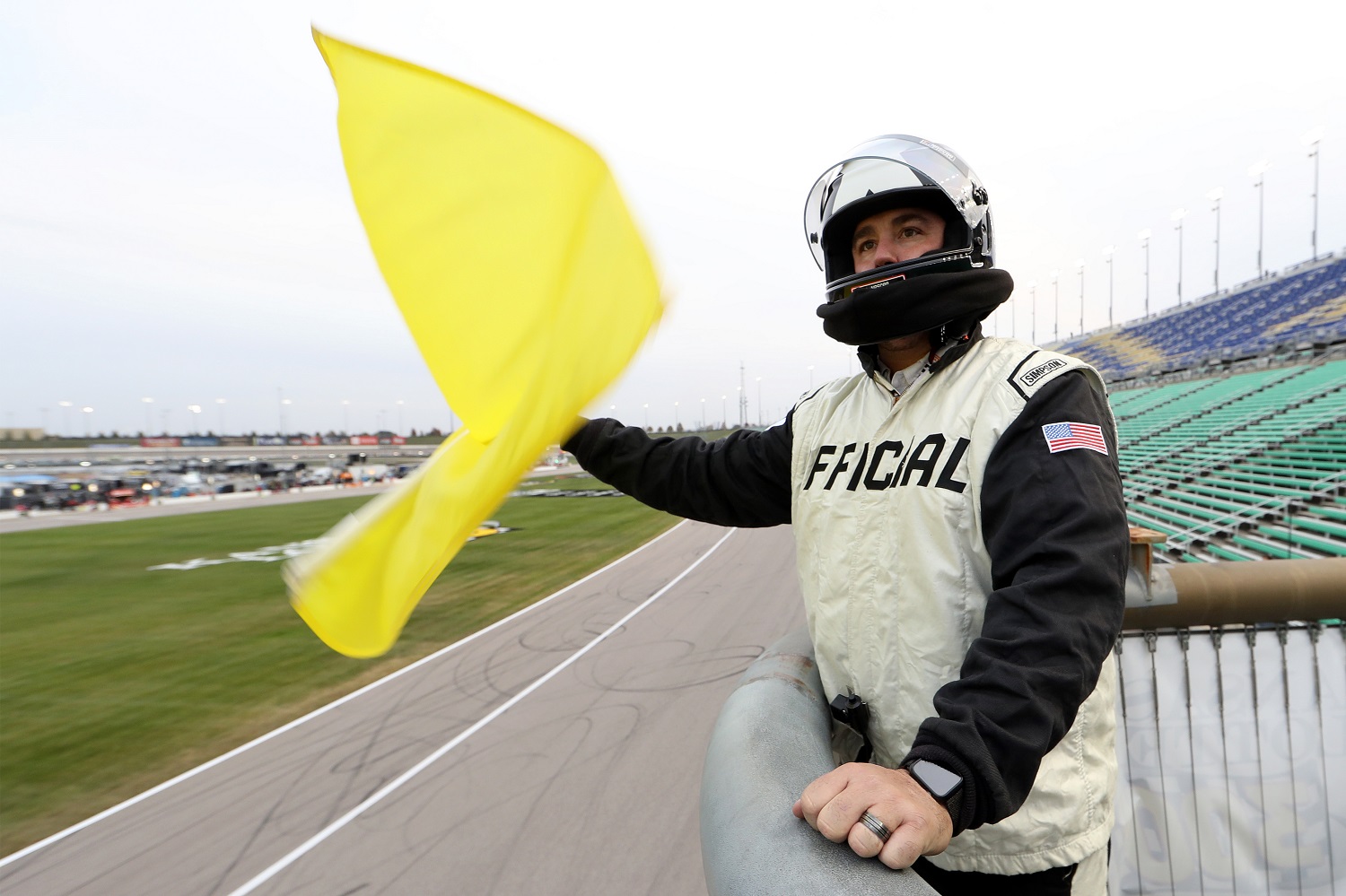NASCAR
What Do the Various NASCAR Flag Colors Mean?

June 14 may be the big day for the Stars and Stripes, but every Sunday is Flag Day in NASCAR circles – uh, we mean ovals. Even casual racing fans know the green flag, the white flag, and the checkered flag. But numerous other flag colors show up between the start of the Daytona 500 and the conclusion of the Championship 4.
So, what do all the various flag colors mean during races?
The fundamentals: Flag colors you’ll see in every NASCAR race

Whether it’s the Craftsman Truck Series on Friday, the Xfinity Series on Saturday, or the NASCAR Cup Series on Sunday, racing starts with the green flag. It’s the signal to put the pedal to the metal and hit max speed. The green flag is also the go-to indicator from the official in the flagstand for restarts following a caution flag or to launch a new stage.
Here are the rest of the essential flag colors in a typical race:
- Yellow flag: Two things typically happen when the yellow flag comes out: Drivers slow to a safe speed, and fans who didn’t see what caused the incident instinctively assume Ricky Stenhouse Jr. spun out and clipped another car.
Seriously, yellow means a caution period on the track because of an incident. It could range from “The Big One” on a superspeedway involving a dozen or more drivers to a car spinning out after coming out of a turn too hot. Occasionally, the yellow comes out because an official spots debris on the track.
When the yellow flag comes out, the pace car races onto the track and the field lines up behind it in their order at the time of the caution.
- Red flag with yellow stripe: o not try entering the pit lane.
- Checkered green flag: This flag signals the end of a stage, meaning it comes out twice per race, except for the Coca-Cola 600, where you’ll see it fly three times.
- White flag: That’s the heads-up to drivers that there is one lap remaining.
- Checkered flag: The black-and-white checkered signals the end of the race, declaring a winner. It’s definitive … unless you’re Denny Hamlin at Pocono.
- Blue flag with yellow diagonal stripe: This warns a driver the leaders are approaching from behind, which usually means a substantial difference in the speeds. The slower car is supposed to yield the racing line to the leader.
Flag colors less commonly seen in NASCAR
- Red flag: This is a yellow flag on steroids. When the red flag comes out, the race comes to a halt. The most common reason is that a wreck has created a debris field ahead, but you can count on seeing it a time or two each season when severe weather moves into the area.
The teams cannot work on their cars, even if the pace car leads the field into the pits.
- Black flag: This is the flag color no driver or crew chief wants to see. A black flag waved at a car means race stewards are ordering the driver to the pits. Most commonly, this is because the car has failed to maintain minimum speed (usually after a wreck or mechanical issues), is dropping fluids on the track that constitute a hazard to other cars, or has lost a piece of mandatory equipment.
- Black flag with white stripes: Now the team is in real trouble. This flag means that a car has not been brought to the pits within five laps of the black flag coming out. At this point, the scoring tower stops crediting the driver with laps run. Disqualification is almost a certainty.
Road courses require more detailed indicators
Road courses like Sonoma and Watkins Glen pose unique challenges for the drivers as well as the stewards trying to conduct a safe race. Because these courses are longer than ovals and have multiple right and left turns, drivers are limited in some spots as to what they can see ahead. Flagmen positioned throughout the course can help them with messages conveyed through two flag colors:
- Blue flag: Conditions are still considered normal, but there is a potential problem ahead that they cannot yet see. Most commonly, a car has gone off the course and doesn’t pose a safety issue. However, the driver could be attempting to return to the course.
- Yellow flag with red stripes: There is debris on the track, but the solid yellow caution flag hasn’t been deployed.
Got a question or observation about racing? Sportscasting’s John Moriello does a mailbag column each Friday. Write to him at [email protected].











